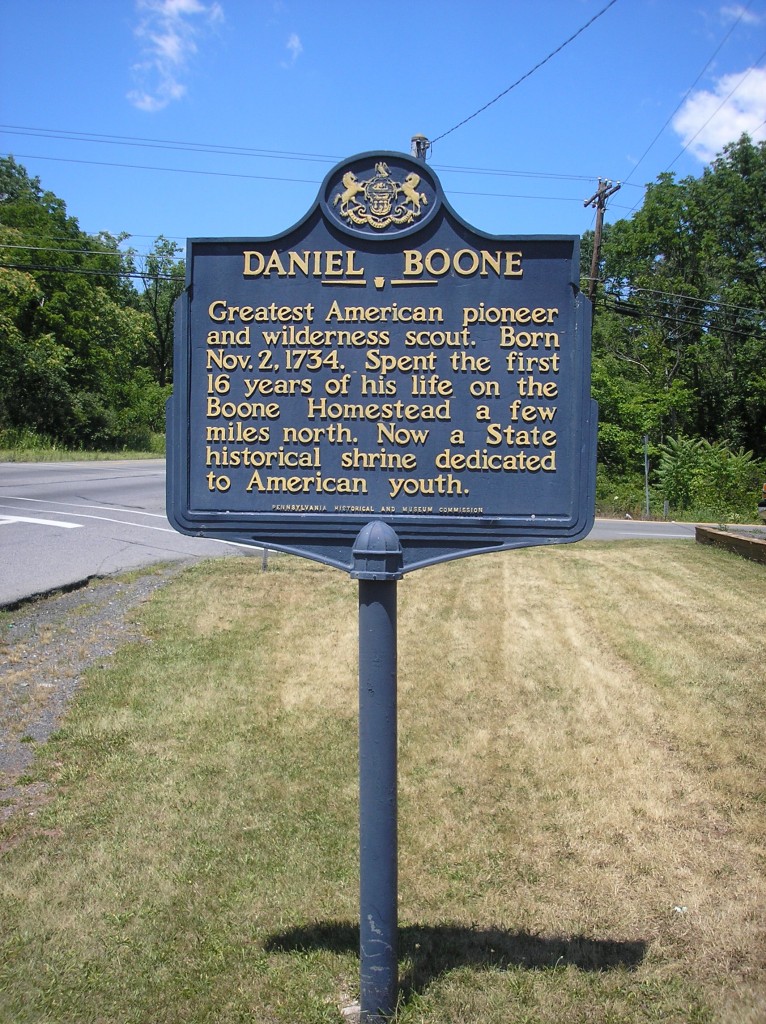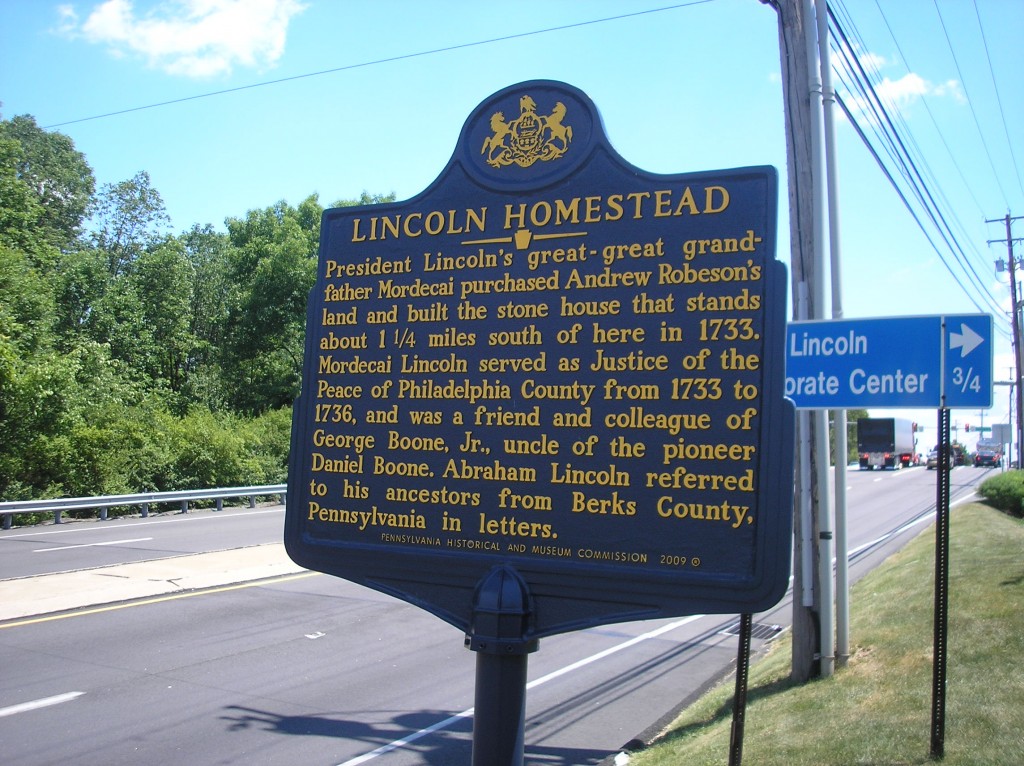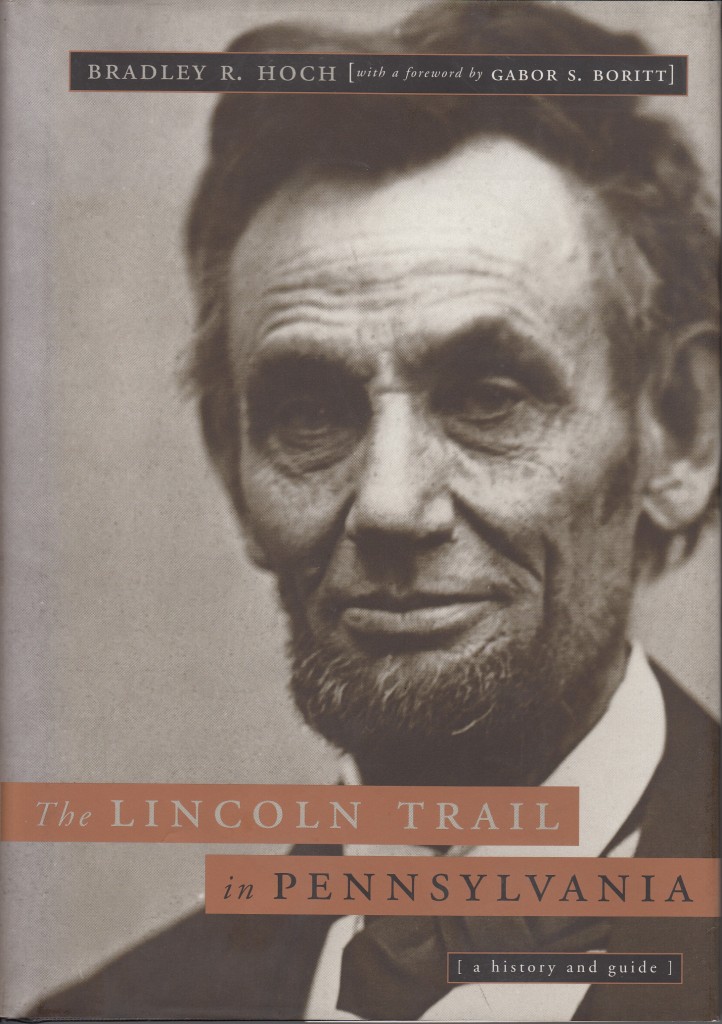Lincoln Roots in Pennsylvania
Posted By Norman Gasbarro on July 18, 2012
Along U.S. Route 422 in Berks County, Pennsylvania, there are two historical markers which call attention to Abraham Lincoln family roots in Pennsylvania as well as the historical sites related to those roots.
LINCOLN HOMESTEAD
President Lincoln’s great-great grandfather Mordecai purchased Andrew Robeson‘s land and built the stone house that stands about 1 1/4 south of here in 1733. Mordecai Lincoln served as Justice of the Peace of Philadelphia County from 1733 to 1736, and was a friend and colleague of George Boone, Jr., uncle of the pioneer Daniel Boone. Abraham Lincoln referred to his ancestors from Berks County, Pennsylvania in letters. Pennsylvania Historical and Museum Commission, 2009.
DANIEL BOONE
Greatest American pioneer and wilderness scout. Born Nov. 2, 1734. Spent the first 16 years of his life on the Boone Homestead a few miles north. Now a state historical shrine dedicated to American youth. Pennsylvania Historical and Museum Commission.
Another view of the Lincoln Homestead marker is seen from the western side in the lane traveling east on U.S. Route 422. The road sign for the modern “Lincoln Corporate Center” can be seen just behind the marker.
Pursuing the “Lincoln Trail” and Lincoln’s roots in Pennsylvania is much easier with the availability of a guidebook.
The Lincoln Trail in Pennsylvania: A History and Guide, by Bradley R. Hoch, published in 2001 by the Pennsylvania State University Press, is an account of where Lincoln traveled in Pennsylvania as well as the story of his roots in the state and his funereal journey to his grave site in Illinois.
A map on page 148 of the book shows the location of “Lincoln sites” in Berks and Chester Counties, two of which are identified by historical markers which are shown above. There is also a brief description of each site – The Mordecai Lincoln Homestead (page 150-151) and the Daniel Boone Homestead (page 151).
In Chapter 2, “Mystic Chords of Memory: Lincoln Ancestors,” Hoch refers to the First Inaugural Address of Abraham Lincoln, 1861, in which he stated that “the mystic chords of memory, stretching from every battlefield and patriot grave… when again touched… by the better angels of our nature.” This quote frames the study of the movement of the Lincoln family along one of the most common migration routes to the west, that of Central Pennsylvania to the Cumberland and Shenandoah Valleys, thence to North Carolina and the Cumberland Gap to Kentucky. Much of this chapter is spent in the Central Pennsylvania experience of the Lincolns with the appropriate genealogical references as supporting data as well as some fact-based speculation as to why the family left the relative security of the area to venture into the surely-difficult frontier, eventually establishing themselves in Kentucky where Abraham Lincoln was born in 1809.
While the Tulpehocken Trail is not specifically mentioned by Hoch, it is suggested that this was the oft-traveled route which he refers to as the “Allegheny Trail” (page 28), westward from Berks County to the Susquehanna River at Harrisburg, then by ferry crossing to the southwest route (the “Virginia Road”) which passed through the Cumberland Valley. It is noted that the economic development of the Pennsylvania towns of Carlisle, Shippensburg and Chambersburg were parts of this westward trail and owed their growth to the multitude of travelers passing through them. The Tulpehocken Trail, from Berks County, was an old Indian path that followed the same general route to the Harrisburg area in present-day Dauphin County, but then headed north through the current Lykens Valley and further northward into present-day Sunbury, Northumberland County. Although the actual ancestors of President Lincoln chose to continue westward by crossing the Susquehanna, many cousins of the Lincolns chose to settle in the rich farm lands north of Harrisburg and east of the river. Hence, the claim of genealogical relationship to Abraham Lincoln, although as distant cousins, of many of the current residents of the Lykens Valley area today.
In other chapters, Hoch reflects on these Pennsylvania roots as Lincoln makes appearances in the state – early-on as a Congressman traveling to Washington, generally unreported by other Lincoln biographers – to two of his most famous”living” appearances as President, travel to his First Inauguration and dedication of the Gettysburg Battlefield – to his final journey to Springfield with its Pennsylvania way stops. Other seminal events, issues and connections in Lincoln’s intellectual development are not ignored – including his relationship with anti-slavery elements in the state; industrial development involving iron, steel and coal; and the value and importance of the national transportation network of roads and railroads.
Hoch’s passion for the study of Lincoln is evident in the resources he consulted. The extensive bibliography and end notes are helpful for those who wish to fact-check what he has presented as well as delve into more detail on Lincoln’s connection with the Keystone State.
The book can also easily be used as a travel guide to the sites related to Lincoln and his family origins.
Finally, Hoch’s own roots in Pennsylvania and the Civil War are noted in the dust-jacket bio. Two men in his direct ancestral lines served in Pennsylvania regiments. Perhaps they served in the same volunteer regiments as did the men from the Lykens Valley area including those with a distant-cousin relationship to Abraham Lincoln – making the book an even more appropriate, necessary addition to a personal/ local (Pennsylvania) genealogical library collection.
——————————
For a prior post on this blog which focuses on the roots of Abraham Lincoln, see Royal Ancestry of President Lincoln. Two “topic” searches are also available: Abraham Lincoln and Lincoln Assassination.
Future post(s) will look at the historical markers on the route from Berks County through the mountains to and through the Lykens Valley area via the route referred to as the “Tulpehocken Trail.”
 ;
;






Comments